
Social media marketing consists of both organic and paid social media.
As social media became increasingly popular, understanding the differences between organic and paid social media is essential to your business’s success.
Some leaders say that organic social media is dead, but every business needs an effective organic social marketing strategy to succeed, even with ads.
So, In this blog post, we will tell you all you need to know about both types of social media and how to incorporate both strategies in your Social Media Marketing that will bring the best results.
What Is Organic Social Media?
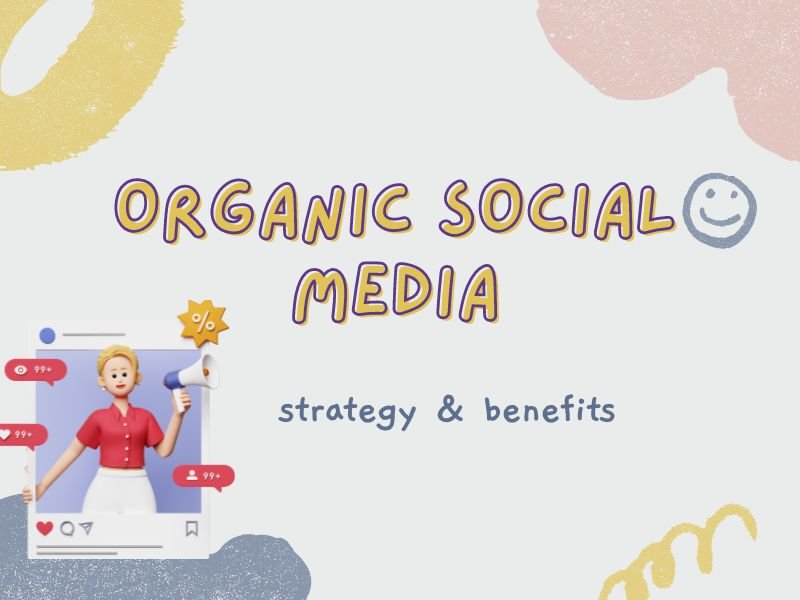
It is the unpaid social media marketing approach to post content to any social media marketing platform to promote your business and reach the potential audience on social networks.
It means creating exciting and engaging content for your target audience so that they will interact with it without any paid promotion or advertisement.
Benefits Of Organic Social Media
Here are the five benefits:
- It increases brand awareness:
It’s the initial step in every business journey, as it helps you reach a wide range of people and build relationships with them. It might be a long process, but it is an effective one.
- It increases traffic to your website:
It is the best way to get more traffic to your website. As you share content, people will be interested in knowing more about you and eventually click through to your website.
- It improves search engine rankings:
As organic shares are made on social networks, it helps increase visibility and eventually improve search engine rankings.
- It helps create more credible content:
It proves helpful in making your content more credible. As you start getting shares, likes, and comments on your content, it increases the credibility of your business’s credibility and its products or services.
- It increases user engagement:
It helps businesses to build long-term relationships with their customers. It helps them to engage with their followers and respond quickly to incoming messages and comments.
What Is Paid Social Media?

It is when you pay for an advertisement to be seen by a specific audience on any social media platform like Facebook, LinkedIn, Instagram, etc.
Benefits Of Paid Social Media
Here are the four benefits:
- It helps in targeting a specific audience:
Whatever your business’s goal, you can target a specific audience with the help of social media marketing. You can choose an age group, country, or other criteria to create an ad that will reach the right people.
- It increases in sales/leads:
It increases sales and leads by getting the attention of your target audience with paid social media ads. Not only does it help to boost brand recognition and website visitors, but it also amplifies your return on investment.
- It gives you control over budget:
It helps you have complete control over your ad spending and target audience. You can adjust the amount spent on an ad and change the target audience.
- It is cost-effective:
These ads are economical compared to traditional advertising. You can spend little money to reach potential customers.
Now that you know the basics of both social media strategies, let’s discuss incorporating both Social Media strategies into your marketing campaigns.
How Do You Incorporate Organic Social Media And Pay?
Well, organic focuses on engaging with the audience, while paid focuses on getting conversions, sales, and leads.
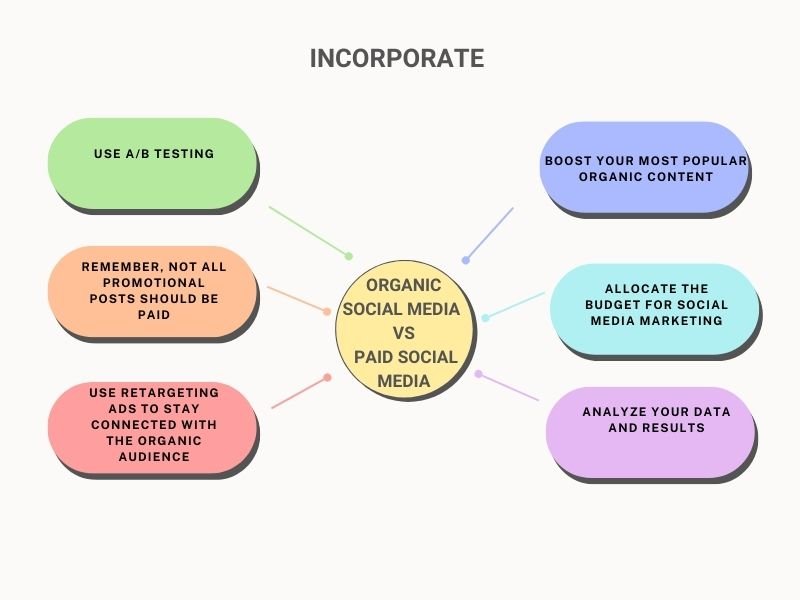
Here are six steps to incorporate both social media strategies in your campaigns:
Use A/B Testing
When deciding between two versions of an organic post or advertisement, A/B testing is the best way to determine accurately which one offers optimal performance and why.
Before investing all your resources in a single ad, take some time to test how each version fares and obtains maximum return on investment.
Doing so will inform you about the demographic that engages with this content most—such as location and age group —and also help reveal what kind of materials they are drawn towards.
This ensures that each version of an ad is as effective and targeted as possible.
Boost Your Most Popular Organic Content
Once you know which strategy would benefit your social media campaigns, it’s time to boost the most popular organic content.
Look at which posts get the most likes, shares, or comments, and use that information to create a successful paid campaign. Placing ads around content that’s already doing well organically ensures that your paid campaign will be successful.
Remember, Not All Promotional Posts Should Be Paid
It’s important to remember that not all promotional posts should be paid for, primarily if they’re targeted at a niche audience that naturally resonates with your brand and product/service offerings.
Investing in organic social media campaigns is more beneficial in such cases, as it will help you reach a wider audience and build trust.
Allocate The Budget For Social Media Marketing

This could be different for each brand. Some may invest more in organic social media campaigns, while others might invest more in paid social media campaigns that drive conversions and sales.
Whatever your preference, allocate your budget according to your campaign’s goal. There could be several goals, such as:
- Generating more leads,
- Increasing website traffic,
- Creating brand awareness,
- Building trust and engagement, etc.
Use Retargeting Ads To Stay Connected With The Organic Audience
Retargeting is a great way to stay in touch with your organic audience and track who has interacted with you on your website or social media campaigns.
This data makes creating better-targeted and tailored ads for the desired user base more accessible, considerably increasing conversions and sales!
Analyze Your Data And Results
This could either make or break your efforts, so it’s essential to analyze your data and results regularly. That will help you improve your campaigns, optimize ads based on their performance data, and gain insights into the success of both organic and paid social media campaigns.
With this valuable information, you can make informed decisions that could increase profit margins.
FAQs
Q1. Is Organic Social Media Better Than Paid?
A. It depends! Different brands require different strategies to reach their target customers, so it’s essential to test and analyze the performance of other social media campaigns before deciding which one works best for you.
Q2. Is It Essential To Use Both Organic Social Media And Paid Social Media?
A. Yes, using both strategies for enhanced campaign performance is essential. Organic campaigns help build trust and engagement, while paid campaigns help drive conversions and sales.
Q3. Is Social Media Time-Consuming?
A. It entirely depends on the business goals and how you strategize and plan social media campaigns. Proper scheduling (Hootsuite, sprout social) and automation tools can save time and money while directing your efforts to the right channels.
Final Thoughts
Now that you have an organized, clear structure and strategy to incorporate organic and paid social media, you can start creating your campaigns today and generating your desired goals.
If you have any questions regarding the topic, please leave them in the comment section. We will be happy to answer you.
Thanks for reading 🙂
Also, Read – Social Media Vs. Traditional Media – Which One’s Better?–
Six Steps To A Successful Video Marketing On Social Media




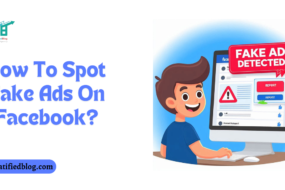
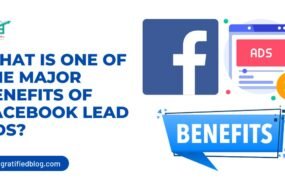

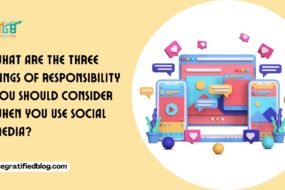
No Comments